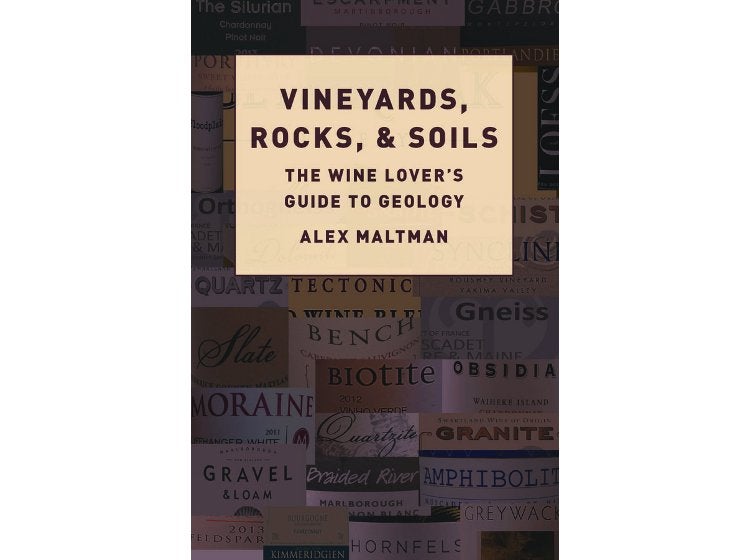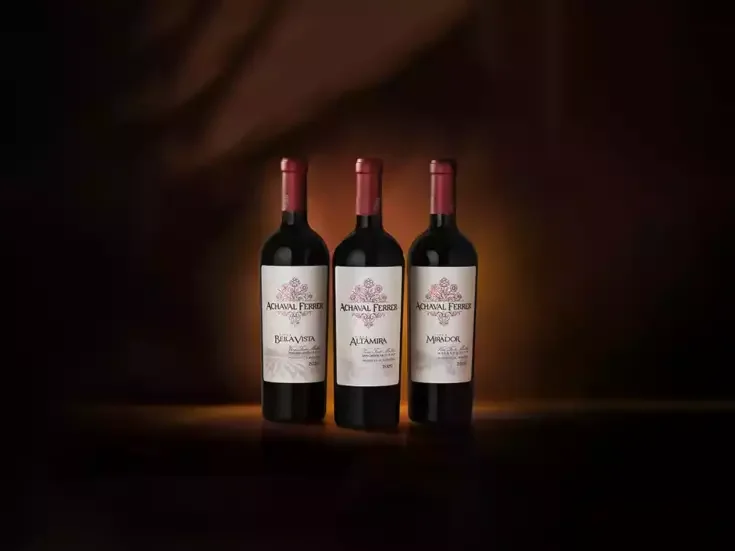
A question of geology: Not where, but why
In today’s wine world, it is difficult to escape geology—well at least in the sphere of artisan wine, of wine of place, of terroir, of fine wine. One has barely stepped off the wine tour bus before being regaled with an account of the geology of the vineyard to be seen over the nearby wall. And then there are the prominently displayed soil profiles and vineyard rock samples by the tasting room. Even the most cursory glance at wine magazines and merchants’ lists reveals numerous allusions to geology, often in the guise of the claimed emergence in the taste experience of the wine in the bottle of some specific reflections of the characteristics of the bedrock underlying the vineyard. And then there are the books on wine and geology that have appeared over the past two decades. These typically comprise geological maps and cross-sections along with attractive pictures of local vineyards and accompanied by some comments on the wines produced. Rarely is there any attempt to present specific mechanisms whereby the characteristics of the bedrock geology of the particular locality could influence wine characteristics.
Into this company enters Alex Maltman’s book. Maltman’s goal is to provide a “ready explanation of geology that the wine lover can turn to” and a reference for the (very numerous and sometimes confusing) array of geological terms that might be encountered by the wine enthusiast. The idea is that the book will serve both as a ready reference source and, on fuller reading, as the basis for “a coherent understanding of geology as it applies to vineyards and wine” for those with a serious interest in the subject. In contrast to previous books on wine and geology, Maltman actually aims to evaluate how geology might be relevant to wine. He is well qualified for the task, with experience growing his own vines and a university career in teaching and research in geology.
Minerals and mineral nutrients
The book is organized into 12 chapters and begins with an introduction to the materials—the elements, minerals, rocks, and soil—that form vineyards and the processes that shape the landscapes in which they are located. The next two chapters provide a primer on minerals and their relationship to rocks and soils, and three chapters follow on the origin and classification of igneous, sedimentary, and metamorphic rocks. Less resolute readers may start to struggle here with the plethora of terms and the reality that rock types lack clear boundaries, since one type grades into another as their mineral content and textural properties vary—for example, the transition from slate to schist. Moreover, different terms have been used at different times and in different places for the same rock type. The next two chapters consider geological structures and how these, along with processes of weathering and erosion, give rise to the landforms on which vineyards are situated. In discussing landforms, the influence of the underlying geological structures could have been better balanced with a discussion of the impact of present and past climates on erosional processes. For instance, the striking “coombe” valleys along the Côte d’Or cannot be understood without an appreciation of the role of the seasonal melting of the active layer above permafrost during past glacial periods in mobilizing the lobes of debris that eroded them.
The following chapter on weathering and soil formation tackles perhaps the most misunderstood word in relation to geology and wine—the term “mineral.” Maltman considers the way it is applied in different contexts and clarifies its geological usage. Importantly, he explains that the phrase “mineral nutrients” refers to nutrients—that is, ions of particular elements required for plant growth— that are originally derived from rock minerals and not to minerals that are somehow themselves plant nutrients. Perhaps even more could have been done to underline this point—maybe by emphasizing the distinction between nutrients that originate from minerals and those that originate from the atmosphere. Nevertheless, useful detail is provided on how vines selectively take up mineral nutrients and how these are partitioned across different components of the plant. The point is made that such processes of plant growth and metabolism, along with the effects of vinification, result in a very indirect and distant relationship between the absolute and relative concentrations of mineral nutrients in the vineyard soil and in the resulting wine.
In the next chapter, the focus on rocks is broadened to soil and climate to encompass the concept of terroir— or at least the concept of what might be better described as environmental terroir. There is important material here, and almost as an afterthought Maltman raises two key points that are frequently ignored in writing about wine. One is that, far from being in a “natural” state, vineyards are often highly modified environments involving the installation of drainage, the use of irrigation, and the application of fertilizers. The other key point is that the vast majority of vines across the world are grafted, so it is the hybrid rootstock rather than the cultivar of the (almost invariably) Vitis vinifera scion that interacts with the vineyard soil. It is not until page 193 that this point is made, and it should perhaps have been introduced and emphasized much earlier in the text. It would also have been helpful to read about the research that has been undertaken on how different kinds of rootstock affect nutrient uptake and vine growth on the same cultivar scion on the same vineyard site, since this bears directly on the proposed link between vineyard geology and the response of particular vine varieties.
The penultimate chapter considers geological time—another notion that tends to generate misunderstanding in the world of wine. There are particular historical—and specifically economic— reasons why age was so dominant a criterion in geological mapping and naming; and age terms from the geological record—for example, the stage names Oxfordian and Kimmeridgian in the Jurassic period—figure prominently in discussions of wine and geology. But the age of bedrock does not determine its composition and structure (though some rock types have preferentially developed during different phases of earth history), and the nature of rocks of the same age can vary enormously across the world and even within a particular region. The final chapter draws together the book’s major theme by summarizing how geology does, and does not, impact on wine, the take-home message being that the minerals that constitute rock cannot be transmitted into vine roots and hence into the wine that we drink.
Much valuable information
Overall, throughout the book the writing is clear and the quality of the information is sound, although in places the attempt to simplify just trips over the line into oversimplification. There are occasional factual errors—for example, ammonium is not the only polyatomic cation, and the Canary Islands are not on a divergent plate boundary—and some issues could have been more fully explored. For instance, I think readers might still be confused as to why, among all agricultural products, it is the wine world that talks of soil types in terms of the underlying geology rather than using a standard soil classification system. And the point that on a hillslope the overlying soil will contain material not just from the immediately underlying bedrock but also from a possibly different rock type upslope, deserves much more emphasis. Such downslope mixing is integral to the movement of material on all slopes and is often ignored in discussions relating vineyard soils to the underlying bedrock.
To sum up, this book provides much valuable information for visitors to wine regions who wish to understand the geological underpinnings to the landscapes that they see, and who are looking for guidance on the geological terms that they might encounter in wine literature. I hope that it will also promote a more informed understanding among those cultural intermediaries of the wine world—the wine merchants, sommeliers, wine journalists, writers, and educators— about how geology does, and does not, influence wine. My fear is that the very fact that this book has been written will encourage some to maintain an exaggerated view of the importance of geology. i hope that readers will also seek out writings on the historical, economic, cultural, and political factors that have influenced—and continue to influence—what kind of wine is produced where, and will ask themselves why the geological narrative in the wine world has become so prominent over the past two decades or so. A growing awareness among many consumers of a sense of place and a yearning for the local, the “natural,” and the “authentic” as part of a reaction to globalization might come to mind, as might the adoption?n of the geological narrative to support wine marketing to such consumers. So, when you next step off that wine tour bus, perhaps your first thought should be not what the geology is, but why the geology is being given so much attention.
Published by Oxford University Press; $34 / £22.99 / €29.99







